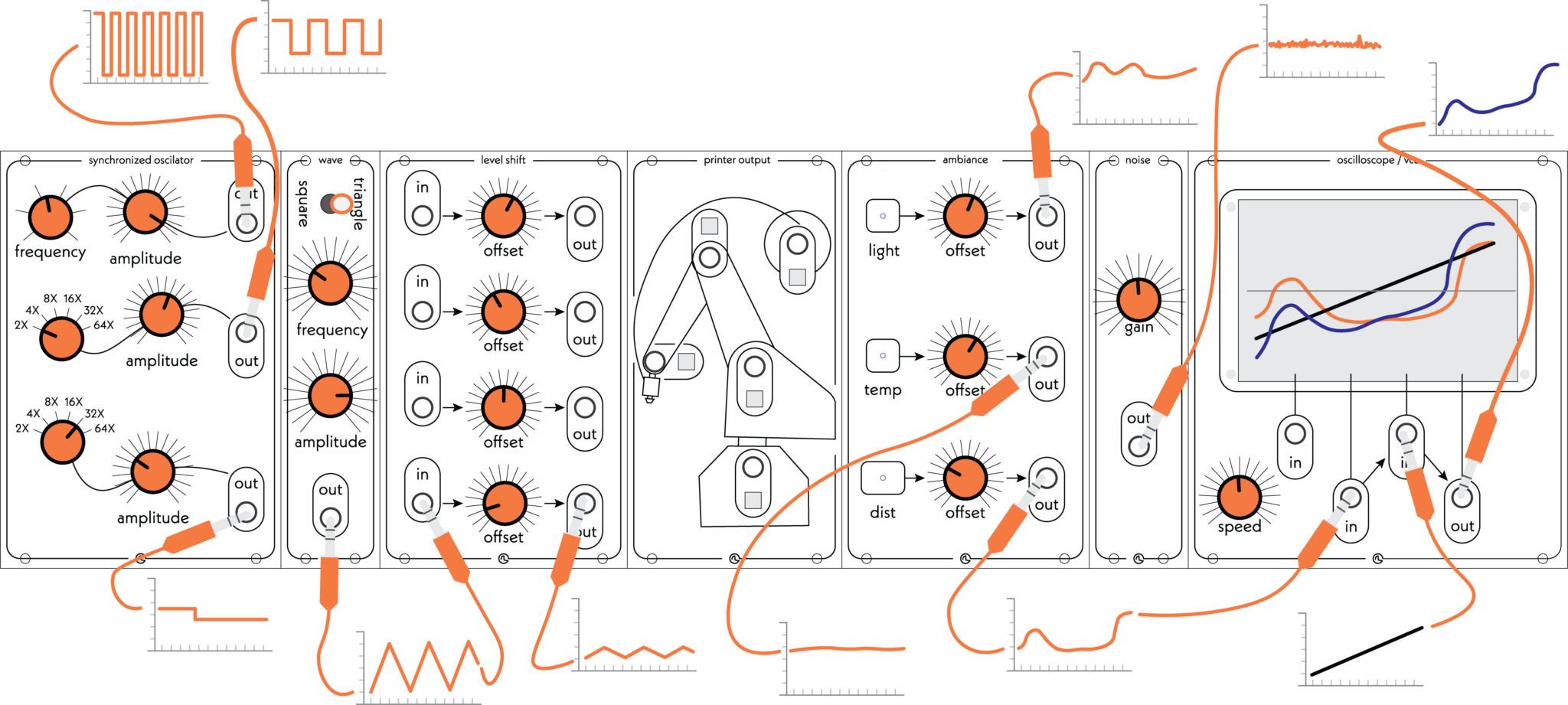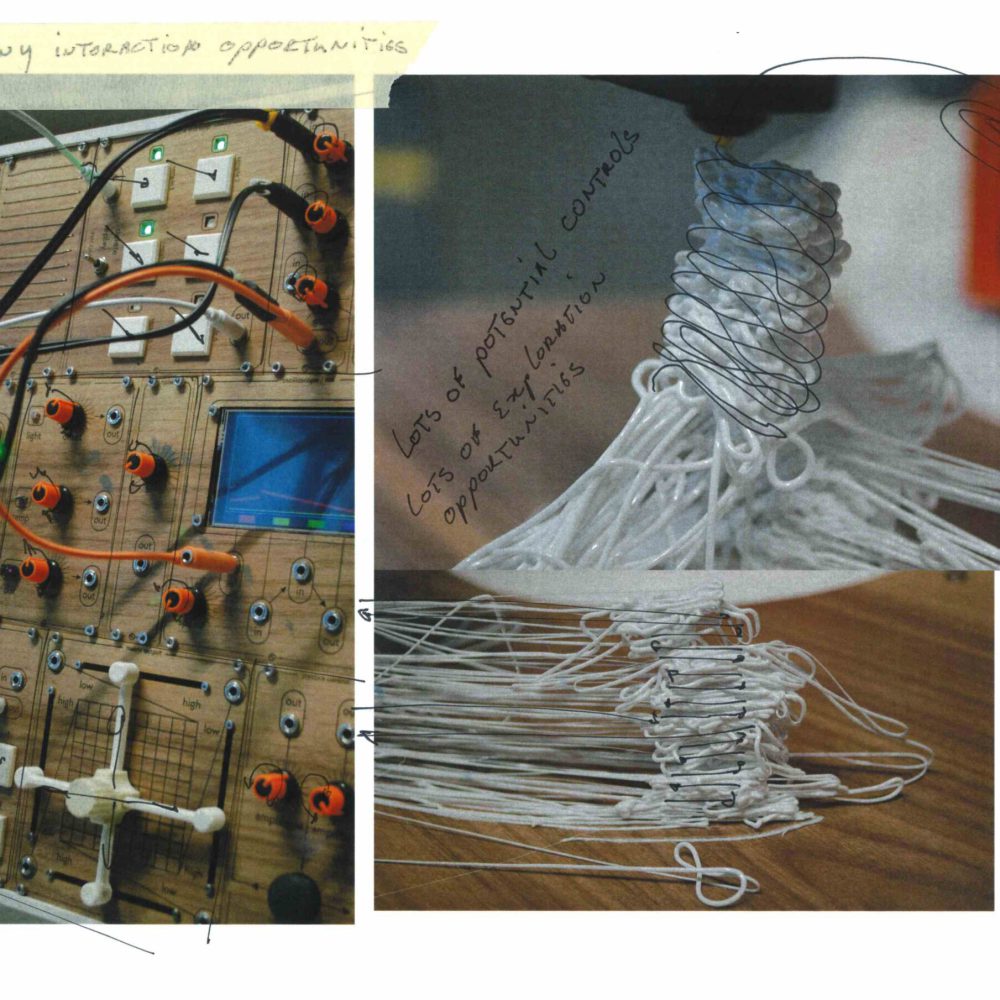
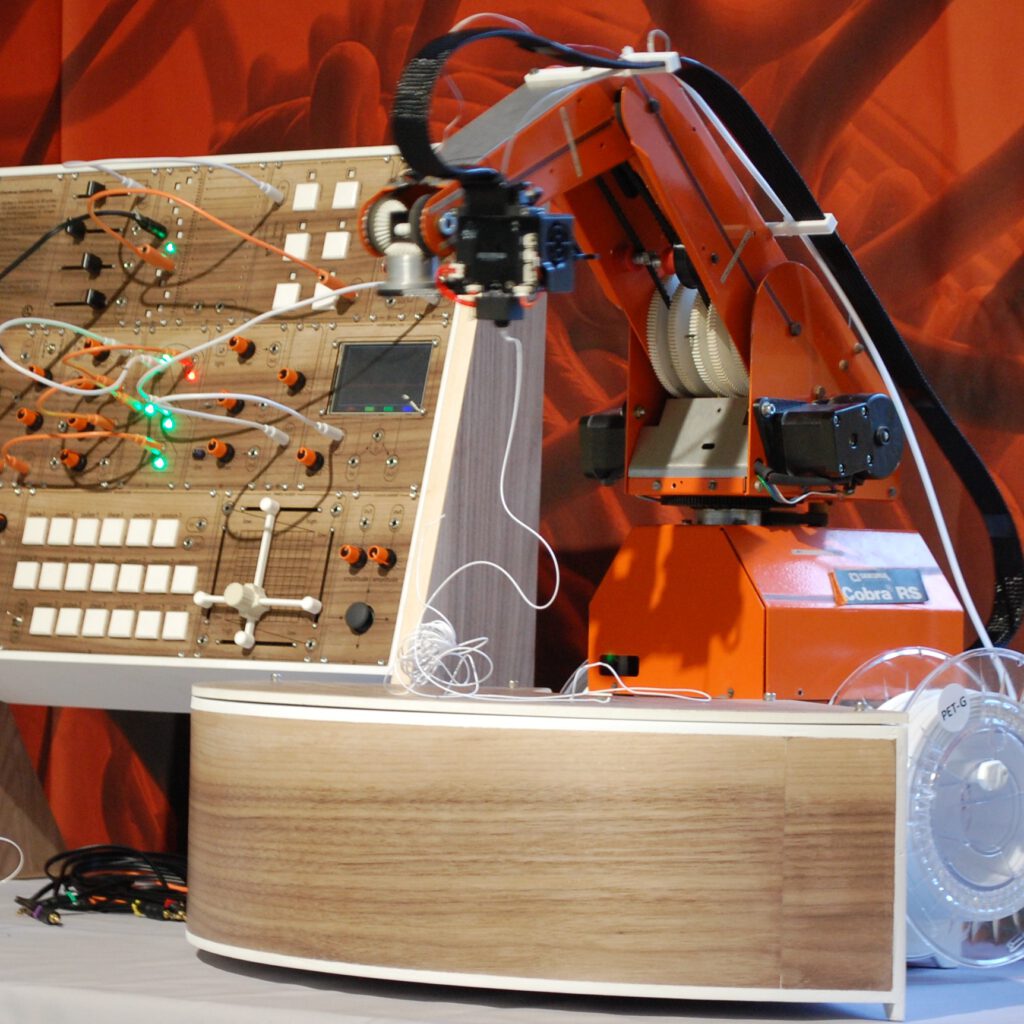
FMP;
Designing a 3D printer; how reflective making engagements
enriched my practice
Our tools shape the way we make, especially digital manufacturing machines like 3D printers can only be used through a digital standardized process. This has a large agency on the things you can make. This project explores an alternative 3D printer, which works differently: it is live programmed through a modular interface. As such this configuration has a large agency on the things you can make. An auto-ethnographic account of me making this machine, engaging with making practises and printing with it developed a changed perspective on making. And as such points to a different paradigm of 3D printing.
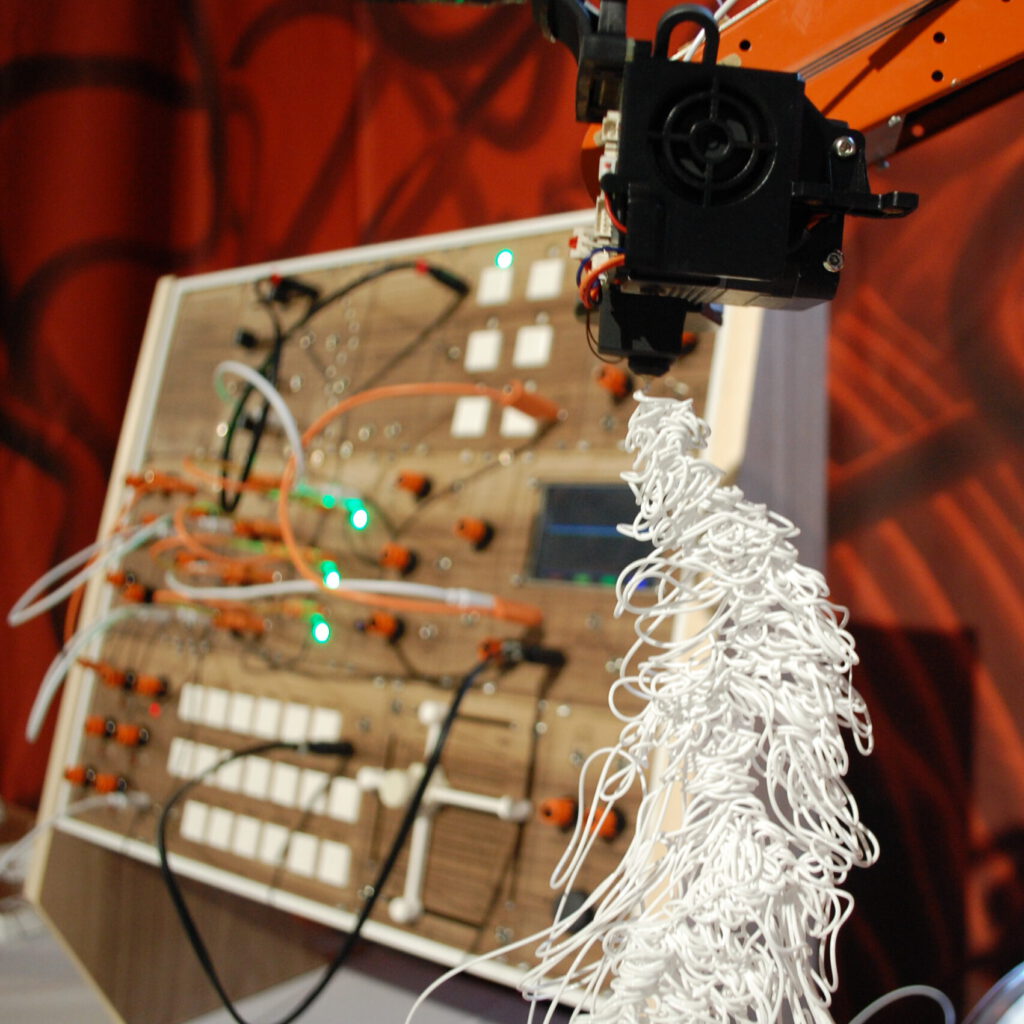
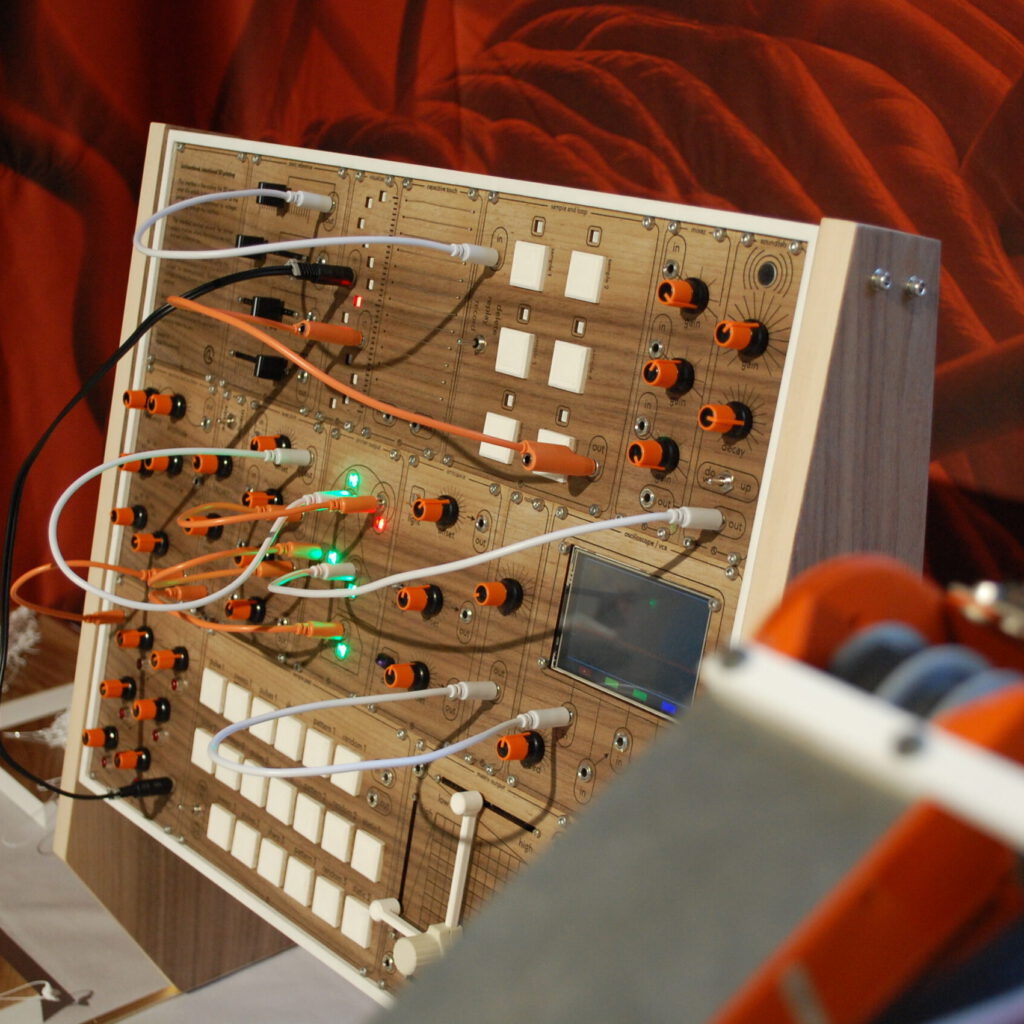
This was my final masters project and the third project of me engaging with 3D printing practises. It marks my final engagement with design in the master and the third of dissecting 3D printing. These three projects follow each other up in complexity, abstraction and philosophical depth. As such I can confidently say that the development of my design practise over these 1,5 years had been thrilling. I’ve found a purpose to my making, that lies beyond solutionism, or technical exploration.
Supporting these contributions was a challenge, getting knowledge, thoughts, insights and ideas out of my head. I am a maker, not a writer nor a sketcher. Intrinsically I can visualize and work designs out directly with little to no use for noting things down. It all exists in my head, and as such documentation always felt like a chore, not delivering anything, but rather an obligatory effort to satisfy an academic standard. Moreover, documenting felt like it was slowing me down and taking away from my creative making processes. This is something that is difficult, and over the years my practice changed from not writing at all, to writing fieldnotes, in sketchbooks. These sketchbooks do work for jotting all these ideas down however hardly contribute in synthesizing cohesive arguments, thoughts and concepts. The role of this book is to “store” the raw data somewhere, to attempt to make it not disappear. However, the evidence is somewhat tentative, it necessitates analysis.
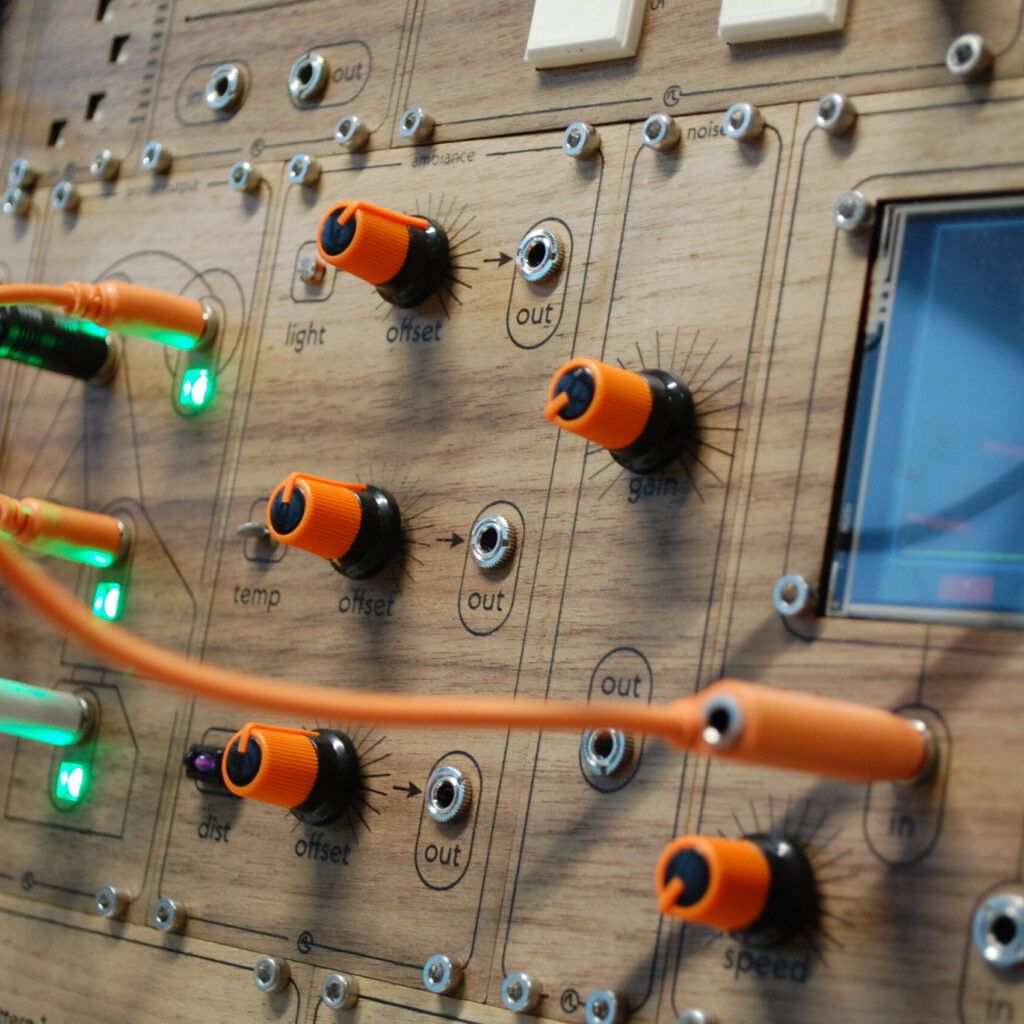
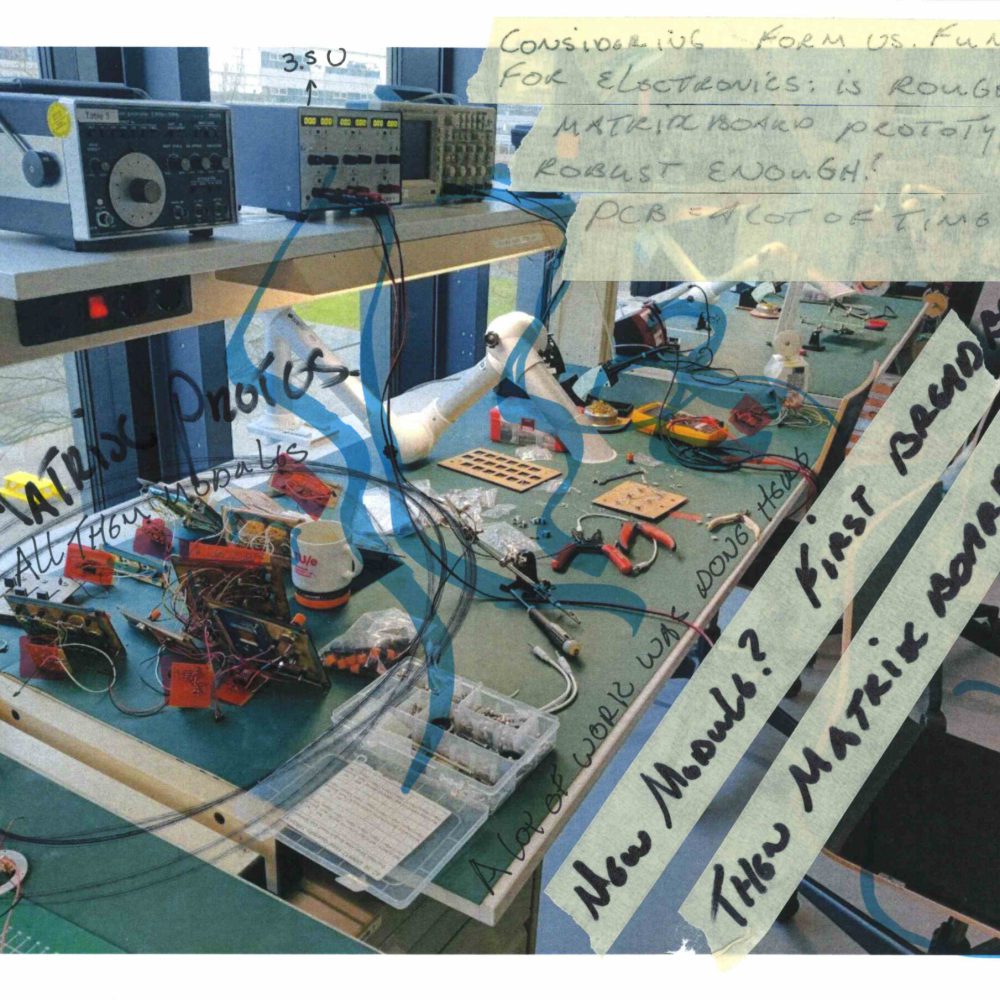
This led to quite a difficult crossroads, where do I want to position myself as a designer, do I position myself more as an artist and let my work talk for me. Or as an academic, and use the work to develop understanding about philosophical concepts? The latter is what really drives me to design, and as such my process must facilitate that to a larger extent than coincidental discoveries. There must be an academic rigor to relate my practice to.
And so, explorations ensued as to how I can elevate my practice, to suit me as a maker, but also generate the contextual insights I can think about, but cannot describe. During this final master project, I took the time to really explore my practice of documentation and analysis. And were I ended up feels like it fits well. The collection of raw data in the form of auto-ethnographic notes does not hinder my making, and analysing them by annotation of pictures was fun and insightful. I believe this will continue to support my practise in the future.
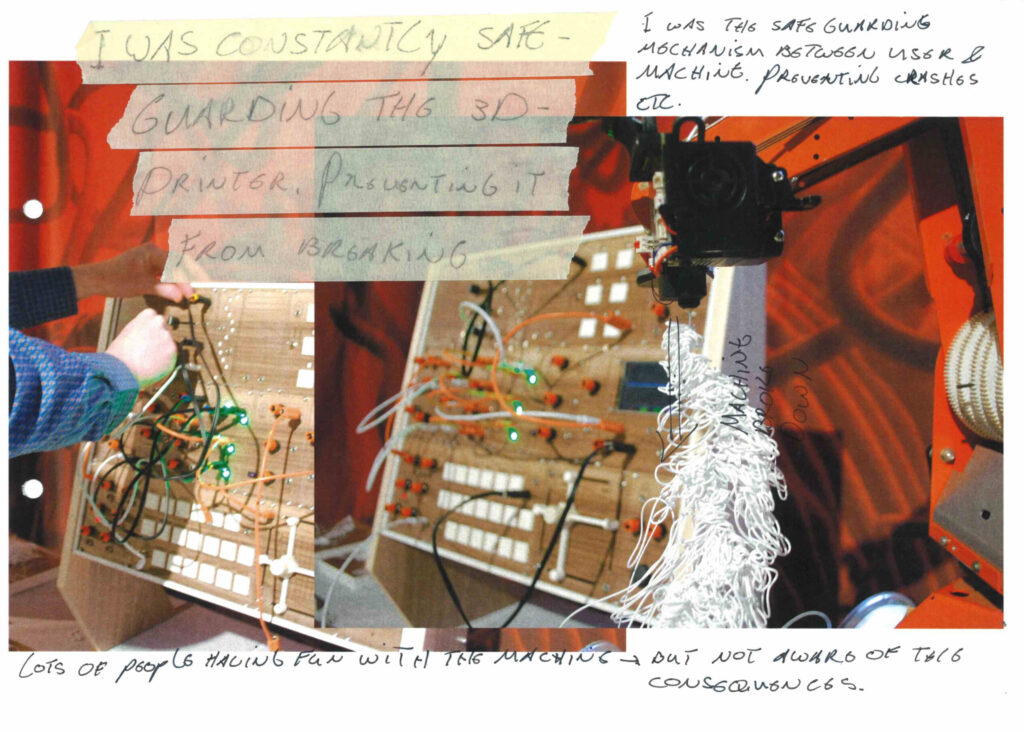
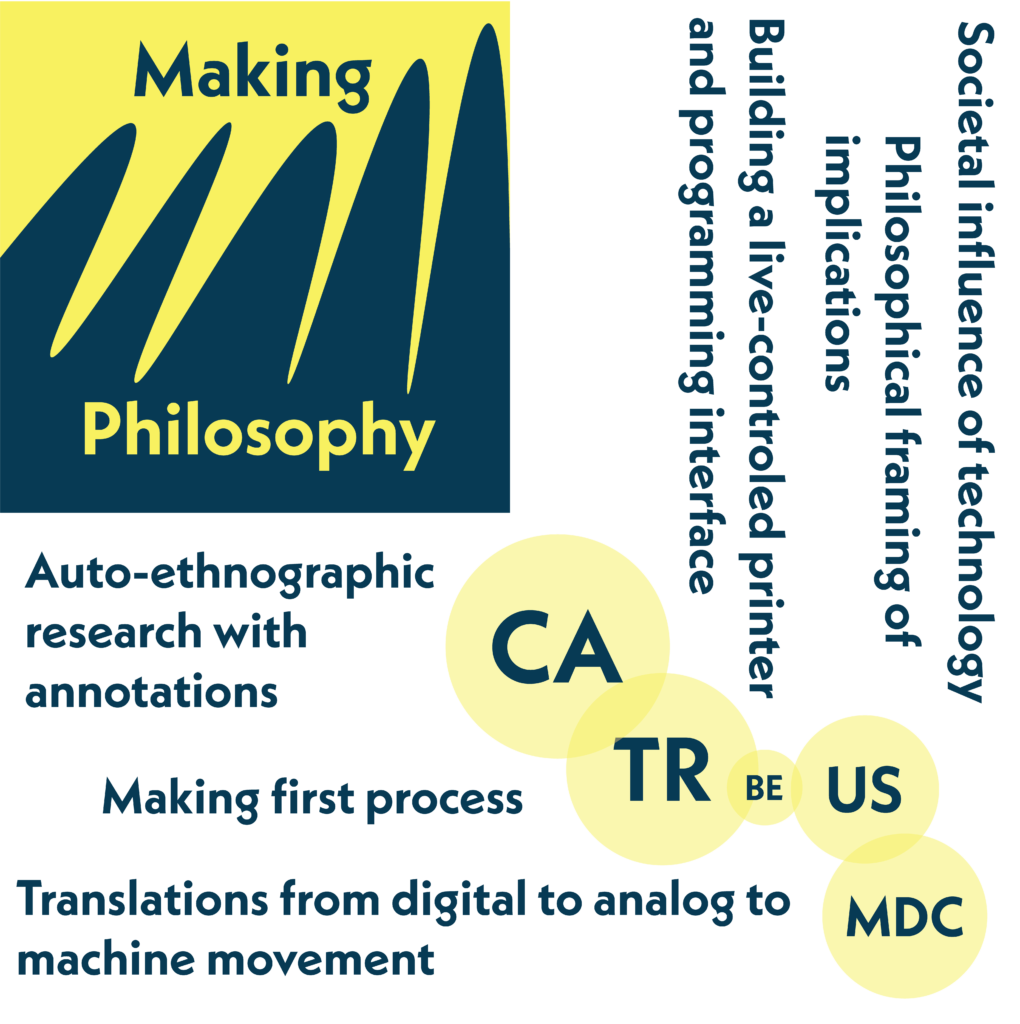
During this project I’ve spent a huge amount of time in T/R and MD/C, exploring the data driving the modules, programming the machine, 3D printing with my machine and a whole lot of making. I’ve worked with C/A in the materialisation of plastic, presenting my design as an artwork and developing my auto-ethnographical analysis. I’ve grown in my U/S skills by talking to multiple experts, involving the broader philosophical scope in reading. And I’ve grown in B/E by looking outward, producing the podcast providing value to an audience of makers.
